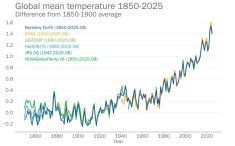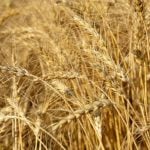MarketsFarm — Weather and less-than-stellar crop conditions were the primary factors that caused week-long rallies on the Chicago Board of Trade (CBOT) for the week ended Wednesday.
Ongoing dryness in most areas of the U.S. saw crops begin to deteriorate. The corn crop dropped six points to 55 per cent good to excellent as of June 18, according to the U.S. Department of Agriculture’s crop conditions report. Soybeans went down five points to 54 per cent, while spring wheat fell nine points to 51 per cent.
As a result, the nearby corn contract jumped 63.25 cents per bushel during the week to close Wednesday at $6.71 (all figures US$). The July soybean contract rose $1.265/bu. at $15.1475. The July Chicago wheat contract climbed $1.0425/bu. at $7.345, the Kansas City hard red wheat contract moved up 88 cents at $8.7375 and the Minneapolis spring wheat contract gained 69 cents at $8.7875.
Read Also

U.S. grains: Soybeans rise on China demand hopes; corn and wheat rebound
Chicago Board of Trade soybean, corn and wheat futures rose on Monday on signs of progress towards the end of a record-long U.S. government shutdown, along with expectations of a revival of U.S. soybean exports to China, analysts said.
Ryan Ettner, a trader with Allendale Inc. at McHenry, Ill., said worsening crop conditions were the primary reason for the rallies, but there will be some relief over the next two weeks in most areas.
“We are leaving Illinois and Indiana dry in the 10-day outlook. But west of the Mississippi River, there are going to be decent rains. There will be strong rains when you talk about the Dakotas and Nebraska,” he said. “You have two states that are going to completely miss the rains.”
Ettner suggested the trade acted as if there would be no rains over the next two weeks, extending the rallies.
“What tops the forecast is rain in the forecast, not rain that actually hits the ground,” he added.
July CBOT soyoil rose 14 cents/lb. since the beginning of June, hitting a high of 60.24 on Monday. However, the contract fell by its limit of four cents two days later. The U.S. Environmental Protection Agency previewed its biofuel blend mandates, showing increases in 2023 and decreases over the next two years. Ettner thinks the trade expected differently in the long term.
“It’s the same case as the grains. They probably got well over-excited and (it ended up) slightly disappointing,” he said.
Ettner said June and July, for the trade, was “the Super Bowl of talking weather” and it would take something drastic — not even Russia’s invasion of Ukraine or weak export numbers — to take the focus away from the predictions of meteorologists.
Whether or not prices will take a downturn will depend on what happens over the next three weeks, according to Ettner.
“Right now, ratings don’t correlate well with final yields. They will correlate much better with yields in about two or three weeks,” he said. “Right now, we’re pricing in at about a 14 per cent yield loss.”
— Adam Peleshaty reports for MarketsFarm from Stonewall, Man.















